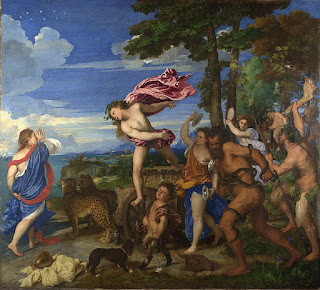Natasha Kidd: Overflow
Natasha Kidd makes automated paintings, systems or machines. Her mechanisms fill paintings from the inside and in making visible the process, action and event of painting itself, I would argue she returns painting back towards a need for grounding itself in disegno. I'll try and explain. Disegno is a Renaissance term describing both the ability to make a drawing and the intellectual capacity to invent a design. It was seen as something all artists, (painters, sculptors or architects) had to do in order to 'design' or visualise their ideas. Disegno was the underpinning framework that a painting was built on. If you wanted therefore to reveal or make visible the processes from out of which a painting emerged, you would show the pentimenti (underlying drawings), cartoons, and the studies, which would again all be drawings. It is interesting to compare Kidd's work therefore with more traditional approaches to making visible the process, action and event of painting itself.
Robert Polhill Bevan: The Feathered Hat: Study for a portrait of the artist's wife
The black chalk drawing above has been squared and numbered for transfer, by leaving this process visible, Bevan in effect is also making visible one of the processes of painting.
Natasha Kidd: Flow and return
The underlying grid that so many painters used to transfer their drawn image onto paper, echoes the grid of pipes Kidd produces in order to 'feed' her canvases with paint.
Jenny Saville: Study from Pentimenti
Jenny Saville’s Study from Pentimenti is an image that demonstrates how making visible the process still can be achieved in more traditional ways. This time it is the pentimento or adjusted underlying drawing that is revealed by Saville as part of the disegno process.
Titian: Bacchus and Ariadne
Beneath the figure on the left in Titian's 'Bacchus and Ariadne' there still exists an adjusted drawing or Pentimento. This normally invisible process can be revealed by x-ray photography and once extracted or separated from the original image, becomes something new again. Another meaning emerges if we go back to the original Italian understanding of 'pentimento' which is repentance. This suggests that changing one's mind can also be a type of repentance or regret.
Jasper Johns: Regrets
The adjusted drawing is also the place where imagery arrives or emerges from the process of making a drawing. In Johns' image 'Regrets', the dark vest like shape and skull image that sits above it, emerged when Johns began drawing from an old torn photograph of Lucien Freud that was found on the floor of Frances Bacon's studio after he had died. The torn out section of the photograph, the missing element, became a positive when the image was mirrored and redrawn, and for Johns the pentimento is now the final image. This too could be compared with another of Kidd's images. Natasha Kidd: Painting that is machine dipped
The paint ripples and lines demarcating levels of dip in Kidd's work, could be compared with Johns' ink washes made within the boundaries of a traced series of shapes taken from the original photograph. The painting as it rises and falls into the vat of paint, creates negative spaces around itself, the rectangular form of the dipping tank, echoing the shape of the canvas. Both Kidd's and Johns' work being self reflective and concerned with the processes of making art itself, in Johns case he recognises other artists and their mythologies as being part of the process, just as much as the physical action of putting paint onto canvas. See also:
Drawing machines at the Venice Biennale
Drawing devices
Drawing from old masters
Process and its documentation








Enjoyed Reading Embroidery Digitizing Websites
ReplyDelete